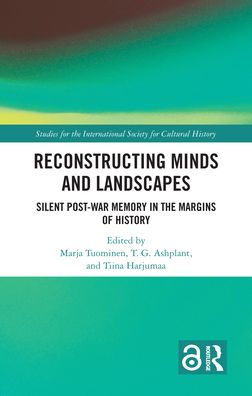Exploration of the less conspicuous aspects of mental reconstruction reveals various forms of post-war silence and silencing which have halted or hindered different groups of people in their mental return to peace. Rather than focusing on the “executive level” of material reconstruction, the volume turns its gaze towards those who experienced the return to peace in the mental, societal, and historical margins: members of ethnic, religious, and cultural minorities, women, and children.
The chapters draw on archival and other original sources, personal memories, autobiographical interpretations, and academic debate. The volume is relevant for scholars and advanced students in the fields of cultural history, art history, and cultural studies.
Chapter 7 of this book is freely available as a downloadable Open Access PDF at http://www.taylorfrancis.com under a Creative Commons [Attribution-Non Commercial-No Derivatives (CC-BY-NC-ND)] 4.0 license. Funded by Jyväskylä university.
Exploration of the less conspicuous aspects of mental reconstruction reveals various forms of post-war silence and silencing which have halted or hindered different groups of people in their mental return to peace. Rather than focusing on the “executive level” of material reconstruction, the volume turns its gaze towards those who experienced the return to peace in the mental, societal, and historical margins: members of ethnic, religious, and cultural minorities, women, and children.
The chapters draw on archival and other original sources, personal memories, autobiographical interpretations, and academic debate. The volume is relevant for scholars and advanced students in the fields of cultural history, art history, and cultural studies.
Chapter 7 of this book is freely available as a downloadable Open Access PDF at http://www.taylorfrancis.com under a Creative Commons [Attribution-Non Commercial-No Derivatives (CC-BY-NC-ND)] 4.0 license. Funded by Jyväskylä university.

Reconstructing Minds and Landscapes: Silent Post-War Memory in the Margins of History
250
Reconstructing Minds and Landscapes: Silent Post-War Memory in the Margins of History
250
Product Details
| ISBN-13: | 9780367469818 |
|---|---|
| Publisher: | Taylor & Francis |
| Publication date: | 12/31/2020 |
| Series: | Studies for the International Society for Cultural History |
| Pages: | 250 |
| Product dimensions: | 6.00(w) x 9.00(h) x (d) |
